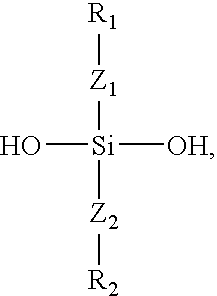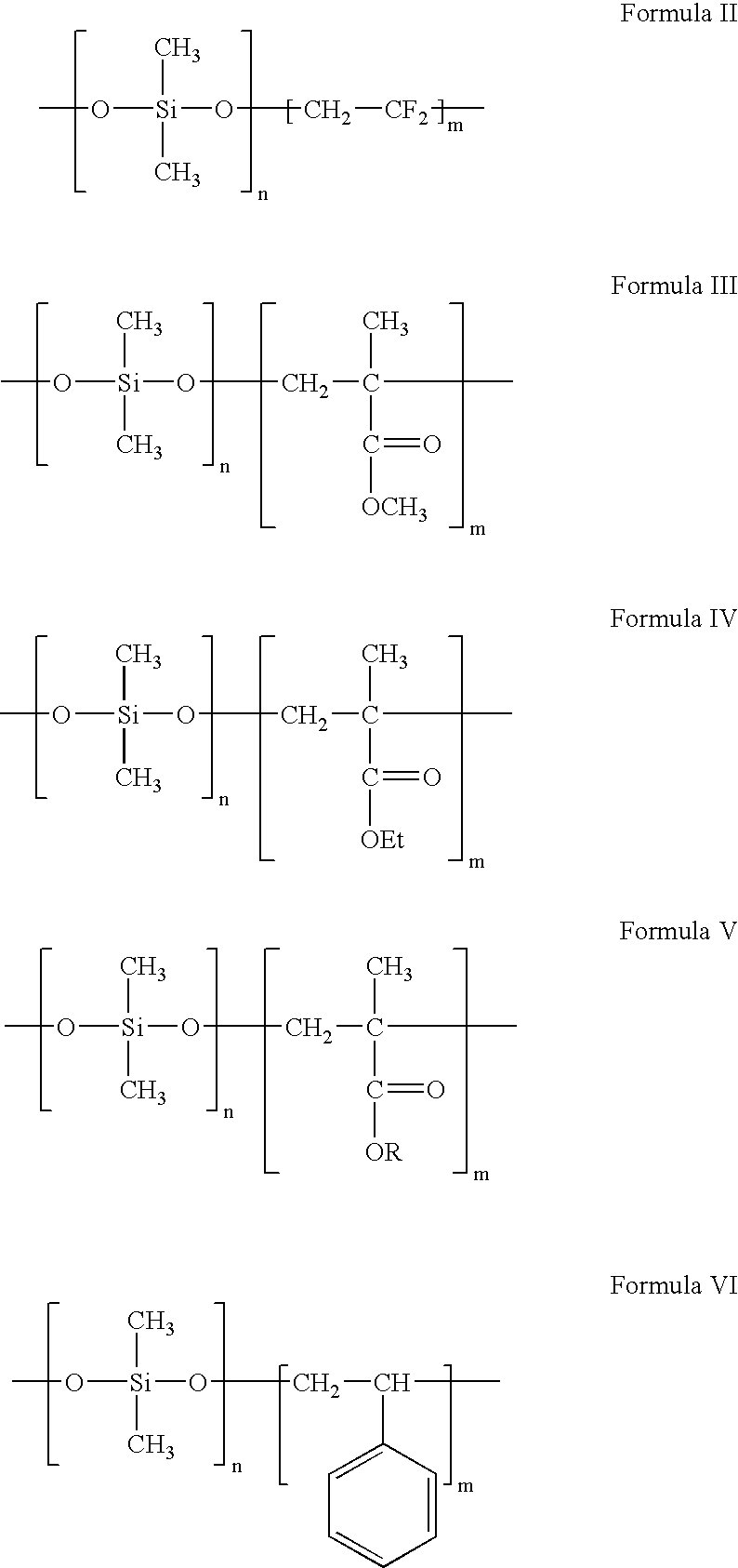Polymers containing siloxane monomers
a technology of siloxane monomer and polymer, applied in the field of polymer materials, can solve the problems of stent thrombosis, chronic issues of restnosis, inability to carry out surgery, etc., and achieve the effect of ensuring the polymer is flexible and imparting strength
- Summary
- Abstract
- Description
- Claims
- Application Information
AI Technical Summary
Benefits of technology
Problems solved by technology
Method used
Image
Examples
example 1
[0047]Polystyrene-b-polydimethylsiloxane (PS-b-PDMS) is purchased from Polymer Source Inc. Montreal Canada (www.polymersource.com) (Product Cat No.: P2617-SDMS, and PS / PDMS=36 / 14.8). 2% of PS-b-PDMS and 0.5% everolimus solution in chloroform-xylene (80:20) mixture can be prepared by adding 2 g of PS-b-PDMS and 0.5 g of everolimus into 78 gram of chloroform and 19.5 g of xylene mixture. The solution is shaken at room temperature until the drug and polymer fully dissolved. Alternatively, the suspension can be put in the oven at 50° C. for 1-2 hrs to speed up the polymer and drug dissolution.
[0048]The coating process can be briefly described as follows. A Vision 3×18 mm stent is pre-weighed, secured in the coating mandrel and mounted on a spray-coater. The polymer-drug solution is spray-coated on the stents with a flow rate of 20 μg per pass. The coating is dried in between from a dry air nozzle. After the coating weight is built about 500 μg, the coating is done. The stent is then dri...
example 2
[0049]Polymethyl methacrylate-b-polydimethylsiloxane (PMMA-b-PDMS) is purchased from Polymer Source Inc. Montreal Canada (Product Cat. No.: P2493-DMSMMA, and PMMA / PDMS=20 / 8). 2% of PMMA-b-PDMS and 1% everolimus solution in chloroform-xylene (80:20) mixture is prepared by adding 2 g of PMMA-b-PDMS and 1 g of everolimus into 77.6 g of chloroform and 19.4 gram of xylene mixture. The solution is shaken at room temperature until the drug and polymer fully dissolved. Alternatively, the suspension can be put in the oven at 50° C. for 1-2 hrs to speed up the polymer and drug dissolution.
[0050]The solution can be coated onto a stent as described in Example 1.
example 3
[0051]Poly(t-butyl acrylate-b-dimethylsiloxane) (PtBuA-b-PDMS) is purchased from Polymer Source Inc. Montreal Canada (Product Cat. No.: P2591-DMStBuA, and PtBuA / PDMS=18 / 8). 2% PtBuA-b-PDMS and 0.75% everolimus solution in chloroform-xylene (80:20) mixture is prepared by adding 2 g of PMMA-b-PDMS and 1 g of everolimus into 77.6 g of chloroform and 19.4 g of xylene mixture. The solution is shaken at room temperature until the drug and polymer fully dissolved. Alternatively, the suspension can be put in the oven at 50° C. for 1-2 hrs to speed up the polymer and drug dissolution.
[0052]The solution can be coated onto a stent as described in Example 1.
PUM
| Property | Measurement | Unit |
|---|---|---|
| molecular weight | aaaaa | aaaaa |
| molecular weight | aaaaa | aaaaa |
| molecular weight | aaaaa | aaaaa |
Abstract
Description
Claims
Application Information
 Login to View More
Login to View More - R&D
- Intellectual Property
- Life Sciences
- Materials
- Tech Scout
- Unparalleled Data Quality
- Higher Quality Content
- 60% Fewer Hallucinations
Browse by: Latest US Patents, China's latest patents, Technical Efficacy Thesaurus, Application Domain, Technology Topic, Popular Technical Reports.
© 2025 PatSnap. All rights reserved.Legal|Privacy policy|Modern Slavery Act Transparency Statement|Sitemap|About US| Contact US: help@patsnap.com



